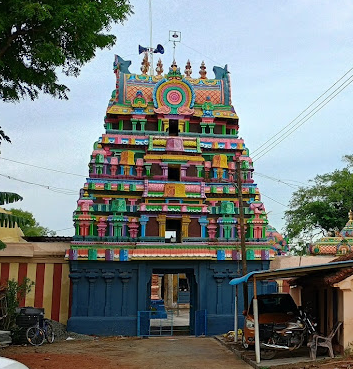The temple is believed to have been established in the 6th century CE. It underwent a complete reconstruction in granite during the Chola period. Subsequently, it was extensively renovated by the Vijayanagara Kings, Thanjavur Nayaks, and Marathas. Inscriptions from the reigns of Veera Rajendra Chola and Kulothunga Chola III can be found within the temple, documenting the gifts, grants, and renovations made to it.
In ancient times, the area was referred to as Sukshmapuri or Sirupidi. Over time, the name Sirupidi evolved into the present-day Serugudi or Cherugudi. This place is also noted as the birthplace of Panan, a landlord and a friend of Chola King Killivalavan, renowned for his philanthropic endeavours. He is celebrated in the Sangam era literary works Akananuru and Purananuru for his contributions to society.
Administration History :
The temple's administration has evolved over centuries, beginning with its original establishment likely in the 6th to 7th century. It underwent significant reconstruction during the Chola period and further enhancements under the Vijayanagara and Maratha rulers. Inscriptions from various kings, including Veera Rajendran and Kulothunga Chozha III, document land grants and renovations made to the temple. Today, it is managed by the Hindu Religious and Charitable Endowments Department of the Government of Tamil Nadu, ensuring its maintenance and continued worship.
